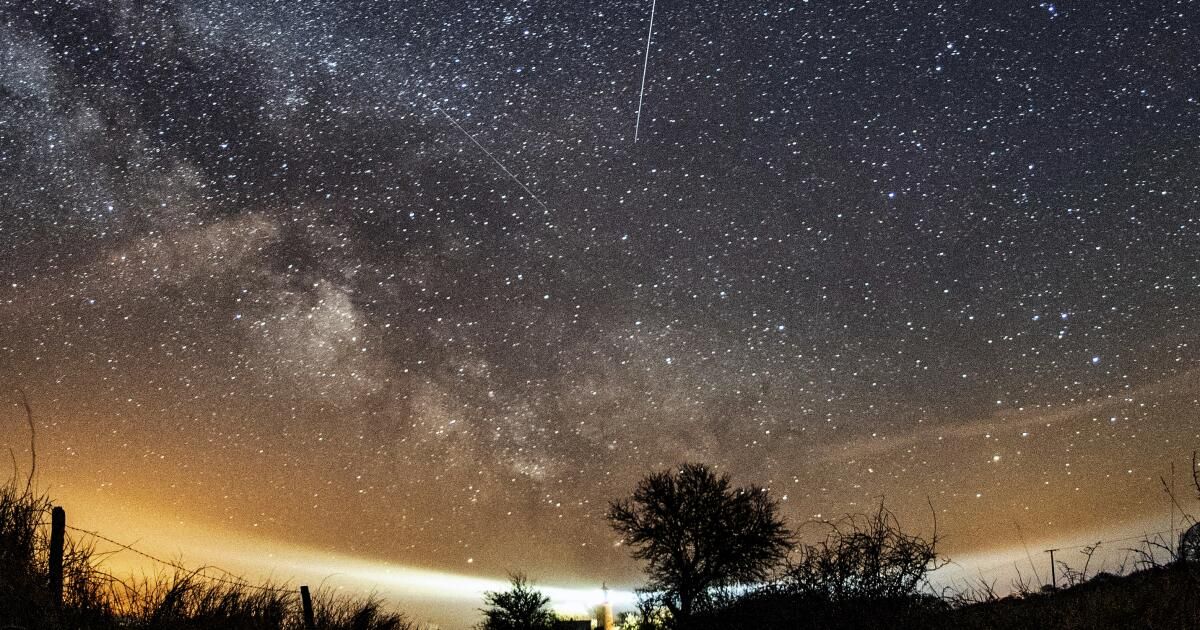The fleeting stars will mark the beginning of Earth Day from Monday night, since Lyrid's meteor rain reaches its maximum point, and the Californians will have some of the best views in the country.
The annual meteor shower event will be more visible in April and bears the name of the Lyra constellation, the harp, located near the point in the sky where the Lyrids seem to originate. The shower is one of the oldest registered, with observations that date back to more than 2,700 years.
The peak of the event will be Monday night until the early hours of Tuesday, Earth Day. Thanks to the clear skies, almost all of California has good visualization conditions, together with some regions of other Western states, parts of the southwest and a pocket of the west medium, including the areas to the west and south of Chicago, according to Accuweather.
In Los Angeles and other important cities where light pollution It is widespread, the Stargazers will have some difficulties in seeing the shower despite the ideal climatic conditions due to the light pollution of households, businesses, street lamps and cars.
“These events are notoriously invisible to the average person because we are all drowning in artificial light, so there really is no prayer for most people to see this at all,” said Ed Krupp, director of the Griffith Observatory.
To obtain a clearer vision of the stars, Krupp suggests that those in southern California should go to the mountains or the desert. Once hopeful spectators are “far from urban invasion”, their opportunity to catch more fleeting stars is much better, he said.
Krupp, who has been serving as the iconic director of the Los Angeles Observatory since 1974, said it is important that people modify their expectations of what they could see in the meteor shower.
“The same name suggests that there are meteors that spill you,” he said. “You are not likely to see more than one meteorite per minute, and Lyrids are not so populated, so the average time between one and the next one could be three minutes or so. It is a process that demands patience and attention.”
The name of “meteor shower” could also imply incorrectly that what the viewers are seeing are meteors themselves, or the surface particles of the broken asteroids, instead of the path that is left behind. “You are seeing a bright hot air tunnel that could have 10 miles in diameter produced by this small very small pebble that passes through the atmosphere and burns,” Krupp said.
Even so, Krupp said that seeing only a fleeting star is a special experience, and one that will often cause applause if you are in the company of other Stargazers. He described the celestial lights as “charming”, saying that there is a feeling of “emotional and edifying” that you get when you witness a pass through the sky.
The best Krupp tips for an optimal visualization experience include dressing hot and becoming as comfortable as possible, since dedicated viewers could be looking at the sky for at least a few hours, passing far beyond midnight. Tiring stars can be easy to lose, he added, so staying focused and being patient is key. It warns against the use of the cell phone, both for the light it emits and the distraction it causes.
With the shower peak during the early hours of Earth Day, Krupp laughed at the alignment of the exhibition of the galaxy and our holiday observance.
“The cosmos is a cold, random and indifferent place, but somehow manages to converge with our own emotional ties,” he said.












